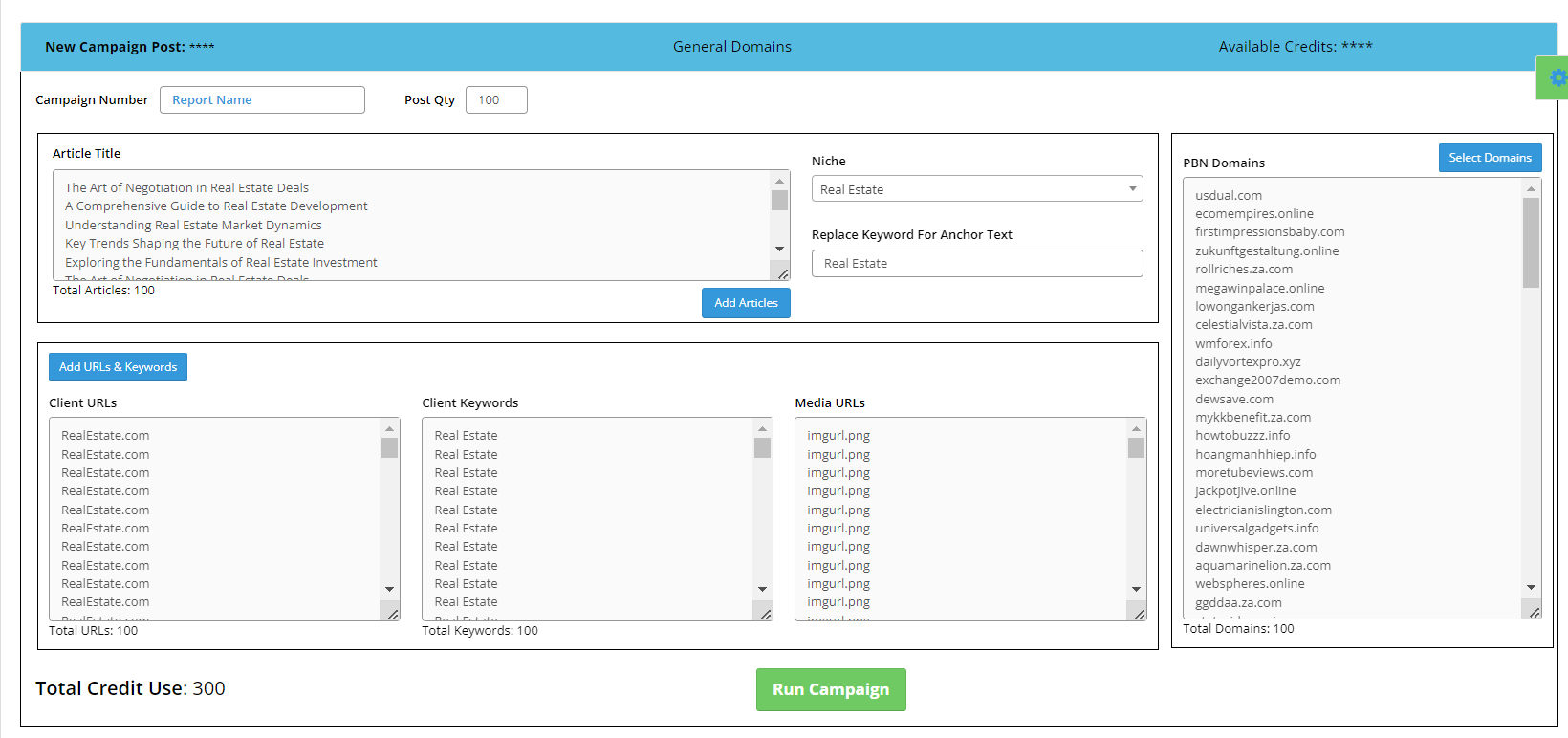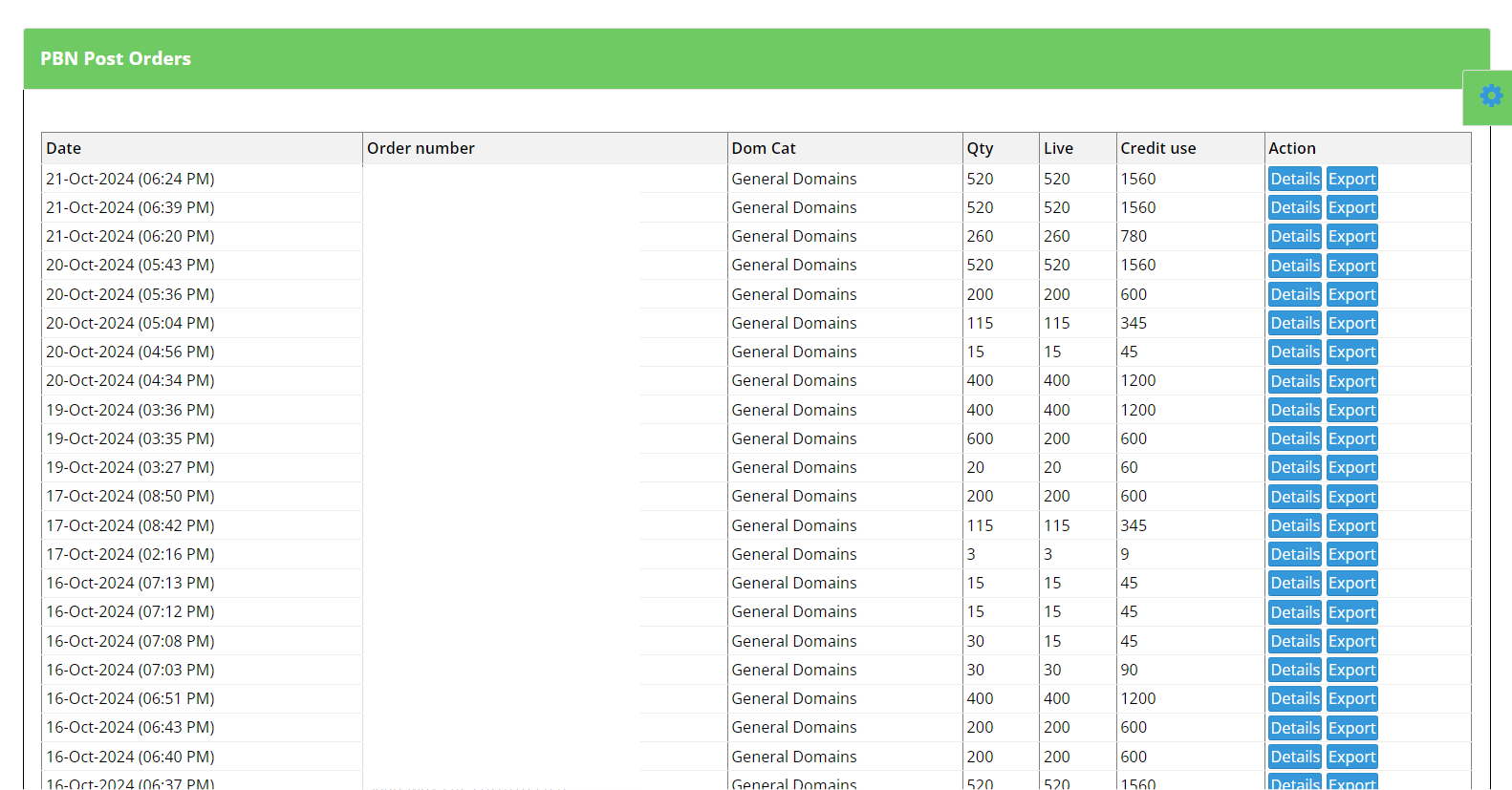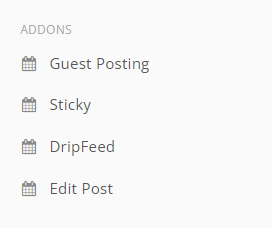
1. Dashboard
This is a central page where people can find all the main features and monitor their blog management activities. The dashboard offers a general idea of ongoing movements, and credit usage, and shows performance metrics.

2. Run Campaigns
Users can start and handle campaigns to schedule and post blog posts. This function contains options like drip-feeding content, making sure of a stable flux of posts over time.

3. Reporting
AutoPilot Tools contains extensive reporting options to keep a track record of performance as well as credit usage
- PBN Post Report: It gives inside observations regarding the performance of PBN posts, aiding users in analyzing their productivity.
- Sidebar Post Report: It provides analysis on sidebar posts and also provides interaction metrics and scheduling performance.
- Credits Report: In-depth data evaluation on credit usage, letting users track and handle their content budget proficiently.

4. Articles
Another section is devoted to tackling blog articles, consisting of choices for adding, modifying, and removing articles. Users can manually add their articles to the content bucket with specific categories.

5. Domains
Individuals can handle and keep a record of domains connected with their articles, making certain that all work is correctly positioned with their digital strategy.

6. ADDONS
AutoPilot Tools proposes a variety of extra features via its add-on section, featuring:
- Guest Posting: This feature handles and schedules guest posts, offering possibilities for content coordination and expanded reach.
- Sticky: This function is to keep significant posts pinned and highlighted for broader reach.
- DripFeed: The elevated scheduling tool that lets individuals post content bit by bit, maintaining reliable audience interaction.